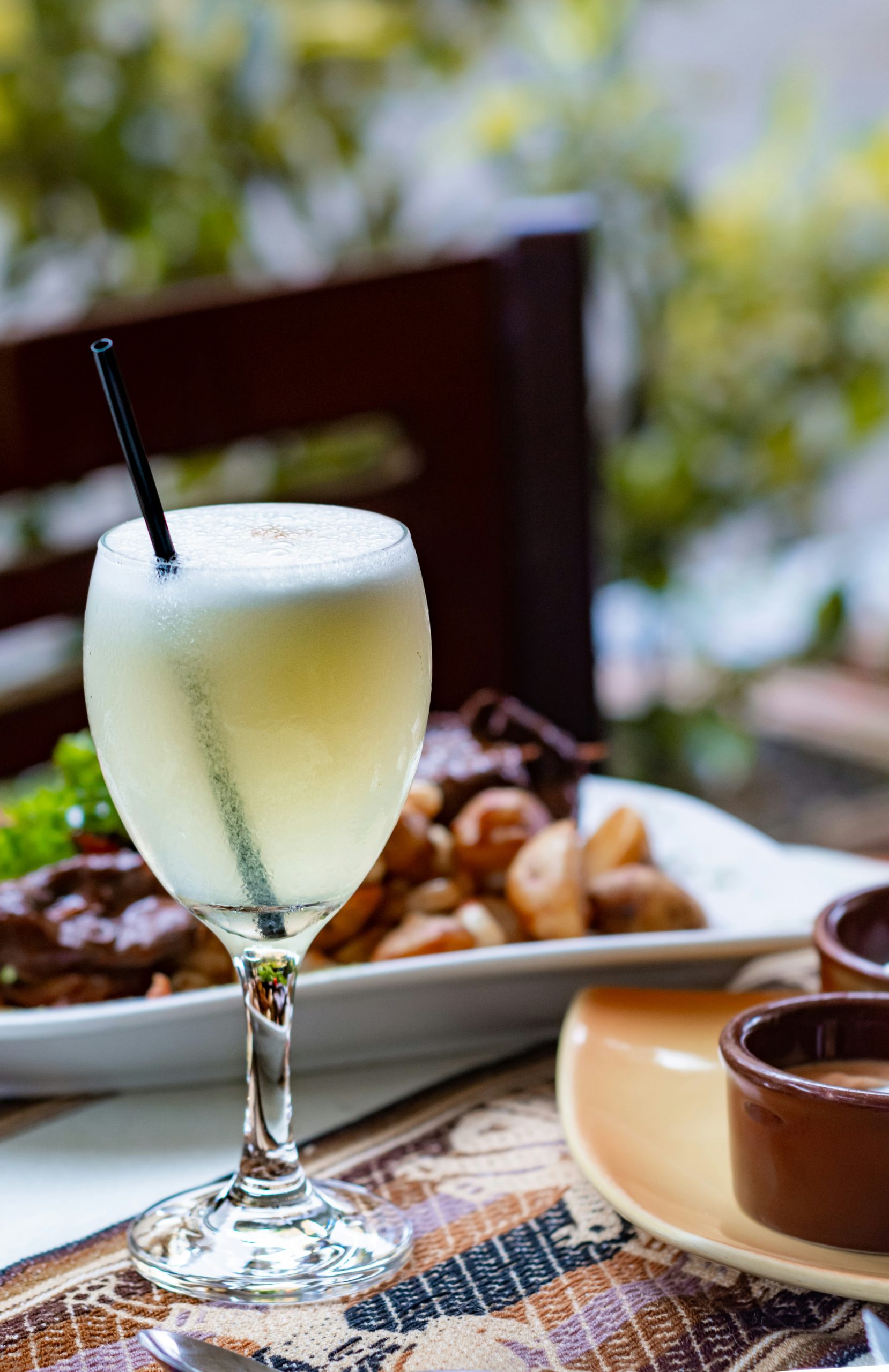Intuitive Cooking: Learning to Trust Your Instincts in the Kitchen
So, there I was, standing in my kitchen with a bewildered expression on my face, staring at a fridge that looked more like a game of Tetris than a source of culinary inspiration. I had a half-empty carton of milk, a couple of random vegetables, and a freezer full of what I can only describe as “mystery meat.” (Seriously, does anyone else have that moment of panic when they find something in the back of the freezer they can’t quite identify?) It was one of those evenings where takeout seemed like the easiest solution, but a little voice in my head said, “Nope. You can do this.” And thus began my journey into the world of intuitive cooking—a place where creativity meets a sprinkle of chaos and a dash of trust in oneself.
What is Intuitive Cooking?
Intuitive cooking is like dancing without a choreographed routine. It’s about feeling your way through recipes, trusting your gut, and letting your taste buds guide you. You know those moments when you’re following a recipe to the letter, and suddenly you realize you’ve run out of an ingredient? Instead of panicking, intuitive cooking invites you to improvise. Maybe add a pinch of this or a splash of that. It’s all about embracing the messiness of cooking and figuring out what works for you—not some perfect recipe from a glossy magazine.
The Magic of Instinct
Honestly, I think the best part about intuitive cooking is that it frees you from the constraints of perfection. I remember once trying to make a fancy risotto for a dinner party. I followed the recipe meticulously—chopped onions, sautéed until golden, added the rice, and stirred, stirred, stirred. But guess what? I forgot to buy broth. Instead of giving up, I grabbed a can of vegetable soup, diluted it with water, and prayed for the best. To my surprise, it turned out delicious! (And no one seemed to mind the “creative” approach.)
This is where the magic happens. When you start trusting your instincts, you discover flavors you never would’ve paired together. Perhaps you’ve found that a pinch of cinnamon elevates your chili or that a splash of balsamic vinegar adds depth to your roasted veggies. These little discoveries become your signature moves in the kitchen.
Getting Started with Intuitive Cooking
If you’re thinking, “This sounds great, but how do I even start?” don’t worry! It’s easier than you might think. Here are some tips to help you embrace your inner chef:
1. Know Your Ingredients
The first step in intuitive cooking is getting familiar with the ingredients you have on hand. Spend some time exploring your pantry and fridge. What do you like? What have you never tried? I once discovered a jar of capers lurking in the back of my cupboard (seriously, how long had those been there?). After a quick Google search, I whipped up a lemon-caper sauce that transformed a mundane chicken breast into something fabulous. (Who knew capers could be so sassy?)
2. Experiment with Flavors
Don’t be afraid to play around with flavors. Start with the basics: sweet, salty, sour, and bitter. Add a little sugar to your tomato sauce to cut acidity, or toss in some lemon juice for brightness. I’ve noticed that many of my best dishes come from daring to mix flavors I wouldn’t normally consider. The other day, I made a chocolate chili (yes, chocolate in chili!) that was surprisingly good. It’s all about being bold and having fun!
3. Cook with Your Senses
Cooking is about using your senses—taste, smell, and even touch. As you cook, pay attention to how things smell and taste. Is the garlic fragrant? Does the sauce need more salt? Trust me, your taste buds are much smarter than you give them credit for. I’ve had moments where I’ve been mid-recipe and suddenly thought, “This needs a kick!” A little cayenne pepper later, and I was in flavor heaven.
4. Start Simple
If you’re new to this whole intuitive cooking thing, start with simple dishes. Think stir-fries, salads, or pasta. These are forgiving and allow for plenty of improvisation. One of my go-to meals is a veggie stir-fry. I just throw in whatever vegetables are hanging around, toss in some soy sauce, and call it a day. (And if I’m feeling fancy, a sprinkle of sesame seeds and a dash of hot sauce never hurt anyone.)
5. Embrace Mistakes
Here’s the deal: you’re going to mess up sometimes, and that’s totally okay. I can’t tell you how many “experiments” have ended up in the trash. But honestly? Some of the best dishes have come from what I initially thought was a disaster. Like that time I tried to make a “healthy” version of mac and cheese using cauliflower. Let’s just say it was more of a cauliflower mush than anything else. But you know what? I learned a lot from that experience. And now, I know to stick to the classic mac and cheese…with a little less healthiness.
Building Your Kitchen Confidence
As you start to embrace intuitive cooking, you’ll notice your confidence in the kitchen growing. It’s a beautiful thing! I mean, how empowering is it to whip up a meal without constantly checking a recipe? It’s like you’re channeling your inner culinary rock star. You can strut into the kitchen, toss ingredients around, and create something magical. (Okay, maybe not quite like that, but you get the idea.)
Trusting Yourself
Trusting yourself is key. Let’s face it; we’re often our own worst critics. I’ve had moments where I second-guessed every decision while cooking. “Should I add more garlic? Is this too salty? What if it’s not good enough?” But I’ve learned that the more you cook intuitively, the more you start trusting your instincts. So, the next time you’re unsure, take a deep breath. You got this!
Creating Your Own Recipes
One of the most exciting aspects of intuitive cooking is the possibility of creating your own recipes. It’s like being a mad scientist in the kitchen! (Disclaimer: please don’t blow anything up.) Start by noting down combinations that work for you, and don’t hesitate to tweak them as you go. I once made a soup that started as a simple vegetable broth but ended up with coconut milk, curry powder, and a handful of spinach. It was one of those happy accidents that turned into a regular in my meal rotation.
Incorporating Seasonal Ingredients
Another fun way to enhance your intuitive cooking is by incorporating seasonal ingredients. Fresh, in-season produce not only tastes better but also inspires creativity. For example, in the summer, I love grilling vegetables and tossing them with fresh herbs and a squeeze of lemon. In the fall, I can’t resist a good pumpkin recipe (pumpkin soup, anyone?). Seasonal cooking helps you connect with the rhythm of nature and makes your meals feel more special.
Join a Community
If you’re looking for a little support and inspiration, consider joining a cooking group or community. There’s something magical about sharing your culinary adventures (and mishaps) with others. You’ll get new ideas, tips, and maybe even a few recipes worth trying. Plus, it’s always fun to swap stories about the times you accidentally set off the smoke alarm while trying to sear a steak. (Ah, memories…)
Final Thoughts
At the end of the day, intuitive cooking is about embracing the journey and celebrating the process. It’s okay to mess up, it’s okay to experiment, and it’s definitely okay to enjoy your food without a side of stress. So, the next time you find yourself staring into the depths of your fridge, remember: you’re not just a cook; you’re an artist, a creator, and a magician in your own kitchen. Let your instincts guide you, and who knows—you might just create something delicious!
Now, if you’ll excuse me, I have a few mystery ingredients in my fridge that are calling my name. Time to channel my inner intuitive chef and see what culinary wonders await!

